The DCB-224, DCB-24
and DCB-36 Aero beacons
were originally designed for use in
airport applications, but became widely used in lighthouses throughout
the US in the 1950's.
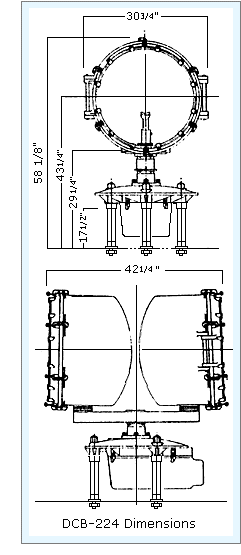 Manufactured by the Carlisle
& Finch Company, the lights could be installed in single or
double configurations, and dependent on the wattage of the bulb
installed emitted a pencil beam of intense light, visible for a distance
of eighteen to twenty-six nautical miles.
Manufactured by the Carlisle
& Finch Company, the lights could be installed in single or
double configurations, and dependent on the wattage of the bulb
installed emitted a pencil beam of intense light, visible for a distance
of eighteen to twenty-six nautical miles.
The DCB-224 has a cast aluminum drum that houses a precision 25"
parabolic reflector. The drum is mounted on a vertical shaft that
is bolted to the three-legged aluminum base. The base houses the motor,
drive gears and electrical system for the beacon. The DCB-224 can also
be outfitted with a CG-2P automatic bulb changer, which automatically switches to a reserve bulb when the primary bulb
becomes burned-out. Designed for severe service, the DCB-224 can
operate unprotected in hundred-knot winds.
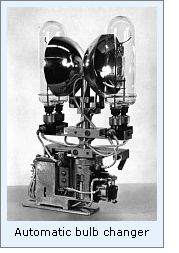 When outfitted with 400 watt metal
halide bulbs, a service life of 20,000 hours per bulb is expected,
thereby allowing a single bulb to burn continuously for over two years. When outfitted with 400 watt metal
halide bulbs, a service life of 20,000 hours per bulb is expected,
thereby allowing a single bulb to burn continuously for over two years.
Outputting intense heat, the Coast Guard currently warns guardsmen
maintaining these lights to "Secure power, tag-out, and then wait
15 minutes before servicing. Wear goggles, gloves and face shield. Lamp
and mirror can explode if they come in contact with cold air from
opening the door after light has been energized."
While no longer manufactured, the DCB-224 is still widely used in the
lighthouses of the Western Great Lakes.
Reference
Sources

Conversation with Bob
Hanford, USCG Auxiliary & Keeper of lighthouse, 05/05/2000.
Photograph taken at Fort Gratiot 05/05/2000
Hali-Brite airport lighting & refurbishment Company website.
Carlisle & Finch Company, website
|
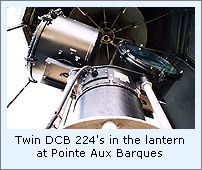
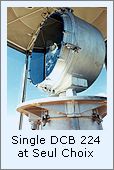
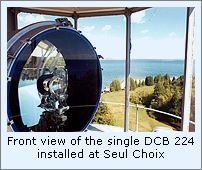



 Manufactured by the Carlisle
& Finch Company, the lights could be installed in single or
double configurations, and dependent on the wattage of the bulb
installed emitted a pencil beam of intense light, visible for a distance
of eighteen to twenty-six nautical miles.
Manufactured by the Carlisle
& Finch Company, the lights could be installed in single or
double configurations, and dependent on the wattage of the bulb
installed emitted a pencil beam of intense light, visible for a distance
of eighteen to twenty-six nautical miles.